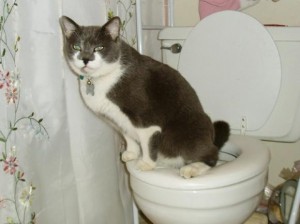Avoid Clogs and Damage: Don't Flush Cat Poop Down Your Toilet - Professional Recommendations
Avoid Clogs and Damage: Don't Flush Cat Poop Down Your Toilet - Professional Recommendations
Blog Article
Do you find yourself in search of insight about Don’t flush cat feces down the toilet?

Introduction
As pet cat proprietors, it's vital to be mindful of just how we dispose of our feline buddies' waste. While it might appear convenient to purge feline poop down the commode, this method can have destructive repercussions for both the setting and human wellness.
Environmental Impact
Flushing pet cat poop presents hazardous pathogens and parasites into the water system, posturing a considerable risk to marine communities. These pollutants can negatively impact aquatic life and concession water quality.
Wellness Risks
Along with environmental issues, purging pet cat waste can likewise position health threats to people. Cat feces may consist of Toxoplasma gondii, a parasite that can create toxoplasmosis-- a potentially severe disease, especially for pregnant ladies and individuals with damaged immune systems.
Alternatives to Flushing
Thankfully, there are more secure and much more accountable methods to throw away feline poop. Consider the adhering to options:
1. Scoop and Dispose in Trash
One of the most common approach of getting rid of pet cat poop is to scoop it right into a biodegradable bag and throw it in the garbage. Be sure to use a committed litter inside story and get rid of the waste without delay.
2. Use Biodegradable Litter
Select naturally degradable feline clutter made from products such as corn or wheat. These litters are environmentally friendly and can be safely taken care of in the trash.
3. Hide in the Yard
If you have a yard, consider hiding pet cat waste in a marked area far from veggie yards and water resources. Make certain to dig deep adequate to stop contamination of groundwater.
4. Mount a Pet Waste Disposal System
Purchase a pet waste disposal system specifically designed for pet cat waste. These systems use enzymes to break down the waste, decreasing odor and environmental influence.
Verdict
Accountable animal possession expands beyond giving food and shelter-- it likewise includes appropriate waste monitoring. By avoiding purging cat poop down the bathroom and selecting alternate disposal techniques, we can reduce our ecological impact and safeguard human health.
Why Can’t I Flush Cat Poop?
It Spreads a Parasite
Cats are frequently infected with a parasite called toxoplasma gondii. The parasite causes an infection called toxoplasmosis. It is usually harmless to cats. The parasite only uses cat poop as a host for its eggs. Otherwise, the cat’s immune system usually keeps the infection at low enough levels to maintain its own health. But it does not stop the develop of eggs. These eggs are tiny and surprisingly tough. They may survive for a year before they begin to grow. But that’s the problem.
Our wastewater system is not designed to deal with toxoplasmosis eggs. Instead, most eggs will flush from your toilet into sewers and wastewater management plants. After the sewage is treated for many other harmful things in it, it is typically released into local rivers, lakes, or oceans. Here, the toxoplasmosis eggs can find new hosts, including starfish, crabs, otters, and many other wildlife. For many, this is a significant risk to their health. Toxoplasmosis can also end up infecting water sources that are important for agriculture, which means our deer, pigs, and sheep can get infected too.
Is There Risk to Humans?
There can be a risk to human life from flushing cat poop down the toilet. If you do so, the parasites from your cat’s poop can end up in shellfish, game animals, or livestock. If this meat is then served raw or undercooked, the people who eat it can get sick.
In fact, according to the CDC, 40 million people in the United States are infected with toxoplasma gondii. They get it from exposure to infected seafood, or from some kind of cat poop contamination, like drinking from a stream that is contaminated or touching anything that has come into contact with cat poop. That includes just cleaning a cat litter box.
Most people who get infected with these parasites will not develop any symptoms. However, for pregnant women or for those with compromised immune systems, the parasite can cause severe health problems.
How to Handle Cat Poop
The best way to handle cat poop is actually to clean the box more often. The eggs that the parasite sheds will not become active until one to five days after the cat poops. That means that if you clean daily, you’re much less likely to come into direct contact with infectious eggs.
That said, always dispose of cat poop in the garbage and not down the toilet. Wash your hands before and after you clean the litter box, and bring the bag of poop right outside to your garbage bins.
https://trenchlesssolutionsusa.com/why-cant-i-flush-cat-poop/

I'm very taken with How to Dispose of Cat Poop and Litter Without Plastic Bags and I really hope you appreciated the new page. Enjoyed reading our posting? Please share it. Let somebody else find it. Thanks a lot for going through it.
Apply Now Report this page